xBRL-CSV format: New era of regulatory reporting
- November 22, 2024
- 7 minutes
For European banks and insurers, regulatory reporting has long involved submissions for frameworks like Capital Requirements Directive / Bank Recovery and Resolution Directive (CRD/BRRD), including Common Reporting Framework (COREP) and Financial Reporting Framework (FINREP) statements, as well as Solvency II, all leveraging the XBRL (eXtensible Business Reporting Language) format.
Nearly two decades after its introduction in 2005, a new development, xBRL-CSV, is anticipated to transform the process, particularly for handling large volumes of data. This innovation is part of XBRL’s broader evolution under the Open Information Model (OIM).
It all started with XBRL
The XBRL format has revolutionized financial and regulatory reporting by providing a standardized, machine-readable format. As an open data standard, XBRL simplifies the exchange of information between systems, and its adoption spans over 60 countries. As of November 2024, there are 216 implementations using XBRL standard worldwide, primarily for regulatory and supervisory reporting.
XBRL was selected in 2005 by the European Commission and supervisory bodies, now known as the European Banking Authority (EBA) and the European Insurance and Occupational Pensions Authority (EIOPA), as the reporting format for regulatory filings.
XBRL comprises of two components:
- Taxonomies: These are dictionaries that define business data concepts and relationships enabling their organization in form of tables resembling the underlying information requirements. XBRL taxonomies streamline reporting processes by standardizing data requirements and facilitating pre-submission validations. The “eXtensible” aspect of XBRL allows organizations to customize taxonomies to better reflect their unique operations.
- Instance documents: These are reports containing data aligned with a taxonomy, accompanied by contextual information like the reporting entity, time period, currency, etc.
Until recently the format of instance documents was XML. As data complexity and volume have surged, XML-based XBRL has revealed its limitations: large and complex file sizes, intricate taxonomies, and slow validation processes. To address these, the XBRL Standards Board annunced in 2020 the OIM, including new formats of data exchange: xBRL-JSON and xBRL-CSV. Among these, xBRL-CSV is emerging as the preferred choice for large-scale regulatory reporting.
Authorities are actively developing systems based on the new specifications, with some planning to make the xBRL-CSV submission format mandatory soon. Meanwhile, work is still underway on XBRL validation specifications to allow direct processing of CSV files without converting them to XML. Further enhancements, including updated features and support for additional formats, are also in development.
The Regulatory Push: Who’s Mandating xBRL-CSV?
The European Banking Authority (EBA) is leading the charge for adopting xBRL-CSV. The EBA’s mandate applies to critical reporting requirements under the Capital Requirements Directive (CRD) and Capital Requirements Regulation (CRR) frameworks, affecting thousands of financial institutions across Europe.
Beginning in 2025, the EBA will require all affected entities to submit their reports in the xBRL-CSV format for some of the frameworks. This transition aligns with broader efforts to improve data quality and efficiency in financial reporting.
Although the exact requirements for reporting data under the European Union’s Digital Operational Resilience Act (DORA) have not yet been clearly defined, the EBA has already released an extension to its XBRL taxonomy as part of the Reporting framework 3.5. DORA might likely be the first live implementation of the new xBRL-CSV standard. This taxonomy is currently used in the DORA dry run.
Other regulatory bodies are expected to follow suit. For instance the European Insurance and Occupational Pensions Authority (EIOPA) is considering similar transitions for its Solvency II reporting, and National Competent Authorities (NCAs) across Europe are preparing their infrastructure to accommodate this shift.
The initiative has also facilitated the alignment of development systems between the EBA and EIOPA through a joint project, the DPM Refit (recently rebranded as DPM 2.0), aimed at modernizing the Data Point Model (DPM) implementation and taxonomy framework. Nonetheless, some differences may persist: EIOPA still needs to establish the xBRL-CSV structure for insurance firm reporting, and EBA’s decision to incorporate DPM codes (datapoint ID) into the taxonomy for data identification may not be universally adopted.
The new architecture of DPM taxonomies, developed with support from the Eurofiling association, will enable DPM 2.0 to meet future requirements and introduce a formalized technical definition as an additional layer to the existing XBRL specifications.
Key Differences: xBRL-XML vs. xBRL-CSV
The traditional xBRL-XML format encodes each reported fact within a detailed XML structure, resulting in large, unwieldy reports. In contrast, xBRL-CSV adopts the streamlined CSV format, widely used in data management. However, xBRL-CSV is more than a simple comma-separated file; it comprises a collection of files linked to an XBRL Taxonomy, where a set of JSON metadata files drives the structure and content of these CSV file.
With xBRL-CSV, file sizes can be compressed to less than 10% of those in standard xBRL-XML, offering a more efficient approach. A diagram below illustrates the components of an xBRL-CSV instance compared to an xBRL-XML instance:

Here’s what sets xBRL-XML and xBRL-CSV apart:
- File Size Reduction: xBRL-CSV can drastically reduce file sizes, particularly for large datasets like those required in banking and insurance regulatory reporting. This alleviates transmission issues.
- Enhanced Performance: CSV’s tabular format allows for faster data loading and validation, especially for multi-fact or record-based data structures. This leads to improved efficiency in data processing and quality checks.
- Compatibility and Integration: xBRL-CSV is more adaptable to existing reporting systems. Firms can map their internal data structures to xBRL-CSV, linking the data to XBRL-defined taxonomies using a lightweight JSON file.
- Simplified Reporting: By adopting xBRL-CSV, firms benefit from simpler, less redundant reporting. The layout is human readable therefore more intuitive and easier for data providers and regulators to interpret.
Benefits of xBRL-CSV Adoption
For regulators and reporting entities, the switch to xBRL-CSV offers several advantages:
- Streamlined Data Submission: It reduces the burden of processing large reports while maintaining high data quality.
- Improved Validation: The tabular structure supports more efficient validation processes, reducing the risk of errors and ensuring compliance with regulatory frameworks.
- Scalability: The format is well-suited to handle the increasing volume and complexity of data in modern financial reporting.
- Readability: CSV reports are much easier to create, update or even read by humans.
Challenges for Reporting Firms
Despite its advantages, the transition to xBRL-CSV is not without challenges. Firms must navigate several hurdles as they prepare for the 2025 deadline:
- System Overhaul and IT Investments
Transitioning to xBRL-CSV requires changes to reporting systems. Firms must invest in upgrading their IT infrastructure to support the new format. This includes acquiring or developing tools capable of generating and validating xBRL-CSV reports. - Understanding DPM Notation
The EBA’s use of datapoint ID notation in xBRL-CSV introduces the necessity of resolving it to underlying table coordinates or DPM structures. - Skill and Knowledge Gaps
Adopting xBRL-CSV requires new expertise. Training staff and recruiting specialists will be crucial for a smooth transition. - Compliance and Testing
Firms need to thoroughly test their reporting processes to ensure compliance with the EBA’s specifications. This includes validating data accuracy, testing submission processes, and coordinating with NCAs to address potential issues.
Impact Analysis and Next Steps
The introduction of the OIM standard, which includes both xBRL-CSV (supporting granular data exchange) and xBRL-JSON (a lightweight format ideal for publishing data), brings new opportunities for handling larger data volumes and simplifying reporting and data use/analysis processes.
This is particularly significant in the European Central Bank’s Integrated Reporting Framework (IReF), which aims to streamline statistical and prudential reporting by consolidating them into a central data dictionary. Under IReF, each piece of information—whether granular transaction data, statistical metrics, key ratios, or aggregated indicators—will only need to be submitted once.
For financial institutions, it raises hopes that the current patchwork of reporting standards—where multiple reports and key indicators are submitted separately for various supervisory needs—will be replaced by a single, unified data transmission process.
To prepare for the 2025 mandate, firms are considering taking the following steps:
- Engage Early with Regulators: Build strong communication channels with the EBA and NCAs to stay informed about evolving xBRL-CSV specifications and requirements.
- Invest in Technology and Training: Update reporting systems and ensure staff are well-trained to work with the new format.
- Pilot and Test Systems: Conduct trial submissions to identify and address potential issues before the compliance deadline.
Adopting xBRL-CSV can unlock new opportunities for organizations, enabling them to communicate their value creation more effectively in a dynamic regulatory environment.

Our regulatory reporting tool, ATOME Particles, is already updated and XBRL-certified to support the xBRL-CSV format, ensuring a smooth transition for our clients and compliant reporting.
With a user-friendly and intuitive design, rapid report completion, dedicated customer support, and regular updates, you’ll have all the tools and assistance you need to make regulatory reporting simpler and more efficient than ever.
Try ATOME Particles now to see how it can streamline your regulatory reporting process:


